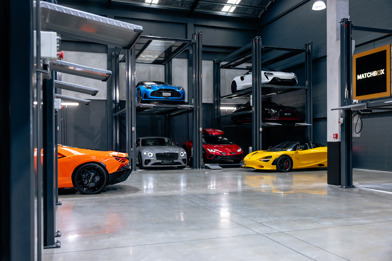It sounds like a motorsport mismatch but when the 2019 Dakar Rally races through Peru in January the form guide points to a Toyota Hilux against Mini duel in the dunes. With one notable wildcard.
Significant changes headline the lead-up to the January 7-17 rally raid marathon.
In recent years the rally has visited Argentina, Chile, Uruguay, Bolivia and Peru but the upcoming 41st edition will be held entirely in Peru.
It means a much greater percentage of the event will be decided by navigation in the demanding sand dunes and a more compact route has been plotted. The 11-day itinerary features 10 special stages with about 3000km of competitive sections in the total route of 5000km.
The start and finish are in Lima and the rally loops through the southeast of the country almost as far south as the border with Chile. The rest day on January 12 is at Arequipa.
There are 334 vehicles entered across the Car, Truck, Motorcycle, Quad and the rapidly growing UTV “side-by-side” categories.
The main change in the competitive order for 2019 has been the exit of the factory Peugeot team after claiming three consecutive Dakar victories.
Three of the former Peugeot crews have moved en-masse to the X-Raid Mini squad driving the latest two-wheel-drive Mini JCW Buggy that features a 3-litre BMW diesel engine developing 250kW and 800Nm of torque.
Defending champion Carlos Sainz (Spain) and Frenchmen Stephane Peterhansel and Cyril Despres have joined the X-Raid Mini squad. The Mini brand is also represented by a number of leading drivers in the Countryman-based X-Raid Mini ALL4 machines including Nani Roma (Spain), Jakub Przygonski (Poland) and Orlando Terranova (Argentina).
Sebastien Loeb returns to the Dakar Rally next month driving a privately entered Peugeot 3008 DKR
The factory Hilux assault comes from Toyota Gazoo Racing South Africa. The highly developed Hilux-based racers are powered by 5-litre Lexus V8 engines and the driving squad numbers Qatar’s Nasser Al-Attiyah (the 2011 and 2015 Dakar winner), 2009 winner Giniel de Villiers (South Africa) and Dutchman Bernard Ten Brinke.
There is an unofficial Peugeot challenge with nine-time world rally champion Sebastien Loeb returning for his fourth Dakar campaign. The private PH Sport team — with strong links to Peugeot and Citroen — has entered 2017 specification Peugeot 3008 DKRs for Loeb and team-mates Harry Hunt (GB) and Pierre Lachaume (France). The car isn’t the wide-body 3008 DKR Maxi Peugeot campaigned in this years race but Loeb remains a wildcard threat against the full factory efforts.
Former WRC driver Martin Prokop (Czech Republic) has entered his self-developed Ford Ranger V8.
Motorcycle interest rests on the efforts of Honda and Yamaha as the challengers to the 17-year unbeaten run of KTM. Red Bull KTM Factory riders are Matthias Walkner (Austria), Sam Sunderland (GB) and Australian Toby Price — 2018, 2017 and 2016 winners — along with privateer Stefan Svitko (Slovakia).
Monster Energy Honda’s leading chances are Portugal’s Paulo Goncalves, Spaniard Joan Barreda Bort and US star Ricky Brabec. Yamaha’s top contenders are Adrien van Beveren (France), Argentina’s Franco Caimi and Xavier De Soultrait (France).
In the truck category, the Russian Kamaz-Master team has won eight of the 10 Dakar events since the rally shifted to South America in 2009. Kamaz drivers Eduard Nikolaev, Airat Mardeev and Dmitry Sotnikov face challenges from Renault, Iveco, Tatra and Maz teams. After missing 2018, two-time winner Gerard De Rooy (Netherlands) returns with his Iveco team and former WRC driver Federico Villagra (Argentina) also races an Iveco.
There are 138 motorcycle riders, 126 in the combined car/UTV category, 41 trucks and 29 quad competitors.




